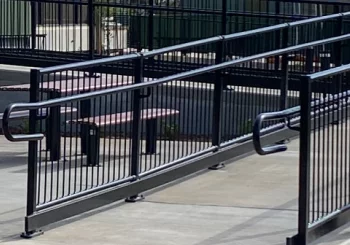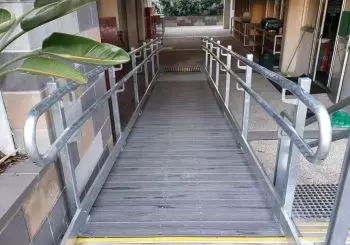A wheelchair ramp is generally designed to provide people with mobility issues with an easier and safer way to access certain areas. In most cases, these areas are in an elevated position and can only be reached by crossing steps, kerbs, or a set of stairs. Through access ramps, individuals who rely on wheelchairs and other mobility aids can easily access these places.
Due to the various benefits of having accessibility ramps,
many people are starting to install them at their homes and business establishments. However, before jumping into this type of project, there are a couple of important things that you have to consider first. If you want to know how to build a wheelchair ramp in Australia, it’s important to prepare for these factors.
Identifying The Primary User/s
Before installing or building a wheelchair ramp, the first thing that you have to think about is the individuals who will be using it. This includes knowing the type of mobility aid that they use, such as a cane, a wheelchair, an electric scooter, or crutches. The type of equipment that they use can affect certain design features of the ramp. For instance, if the person uses a scooter, then the access ramp should be able to support heavy loads.
It’s also helpful to plan for the future by considering the possible changes in the condition of the ramp’s primary users. If they mainly use a walking cane, try to determine if they will eventually transition to a wheelchair or a mobility scooter in the near future.
Location Of The Ramp
Another factor that you should consider is the placement of the wheelchair entry ramp. In most cases, outdoor ramps are connected to the main entrance of a house or building. Measure the space around the main entrance to see if you can install a straight ramp or one that has a 90-degree or a switchback design. Sometimes, space limitations and the presence of obstacles such as trees will require you to follow certain designs for your ramp.
Aside from the outdoor ramp’s shape, you also have to think about the location of its entry point. Ideally, it should be placed in an area that people can easily and quickly access once they reach your house or business establishment.
Building Materials
In addition to considering its main function and location, knowing how to build a wheelchair ramp in Australia also involves identifying the right types of materials that you’ll use for its construction. As mentioned earlier, if the ramp will be primarily used by wheelchair and scooter users, then it should be made out of sturdy materials with a relatively high load capacity.
If you’re planning on installing an outdoor ramp, then you should also make sure that it can withstand being exposed to harsh weather conditions. Most accessibility ramps feature metal or timber frames with floor panels made of wood or aluminium.
Ramp Regulations
If you’re planning on building a wheelchair ramp in Australia, you need to make sure that its features follow the standards set by various laws and regulations in the country. For instance, wheelchair entry ramps that have a length of over 1,900 millimetres are required to have a maximum slope of 1:14. Their handrails should also follow certain height requirements.
Aside from regulations about wheelchair ramp specifications, you should also check the residential building codes in your area if you’re planning on installing a ramp outside your home. Usually, you have to secure certain requirements before building additional structures on your property.
Handrails And Other Safety Features
The handrails for your ramp should follow the specifications set by the Australian Building Code and the Australian Standards. According to the latter, the height of handrails should not be less than 865 millimetres from the surface of a ramp or the nosing of stair treads. Also, the space between handrails on ramps should be about 1,000 millimetres wide to ensure that they can accommodate mobility aids..
In addition to handrails, wheelchair ramps are also required to have additional safety features. For example, those that are steeper than 1:20 should be equipped with slip-resistant surfaces. Also, ramps with a slope of 1:14 are required to feature landings every 9 metres.
Ramp Specifications
The slope and other specifications of a ramp will depend on its type and function. For example, a step ramp that’s less than 1,900 millimetres long should not be steeper than 1:10. On the other hand, a threshold ramp, which is used for crossing doorways, has a length of less than 280 millimetres and a slope of not more than 1:8.
As for larger ramps or those that are usually used as an alternative to stairs, the slope of these inclined planes should fall between 1:20 to 1:14. In addition, non-straight ramps or those that feature changes in direction are required to be equipped with landings or circulation spaces.
As mentioned earlier, knowing how to properly build a ramp in Australia involves considering various factors. By being mindful of these things, you’ll be able to install a ramp in your home or place of business that’s sturdy, practical, Australian Standards-compliant, and safe to use.




